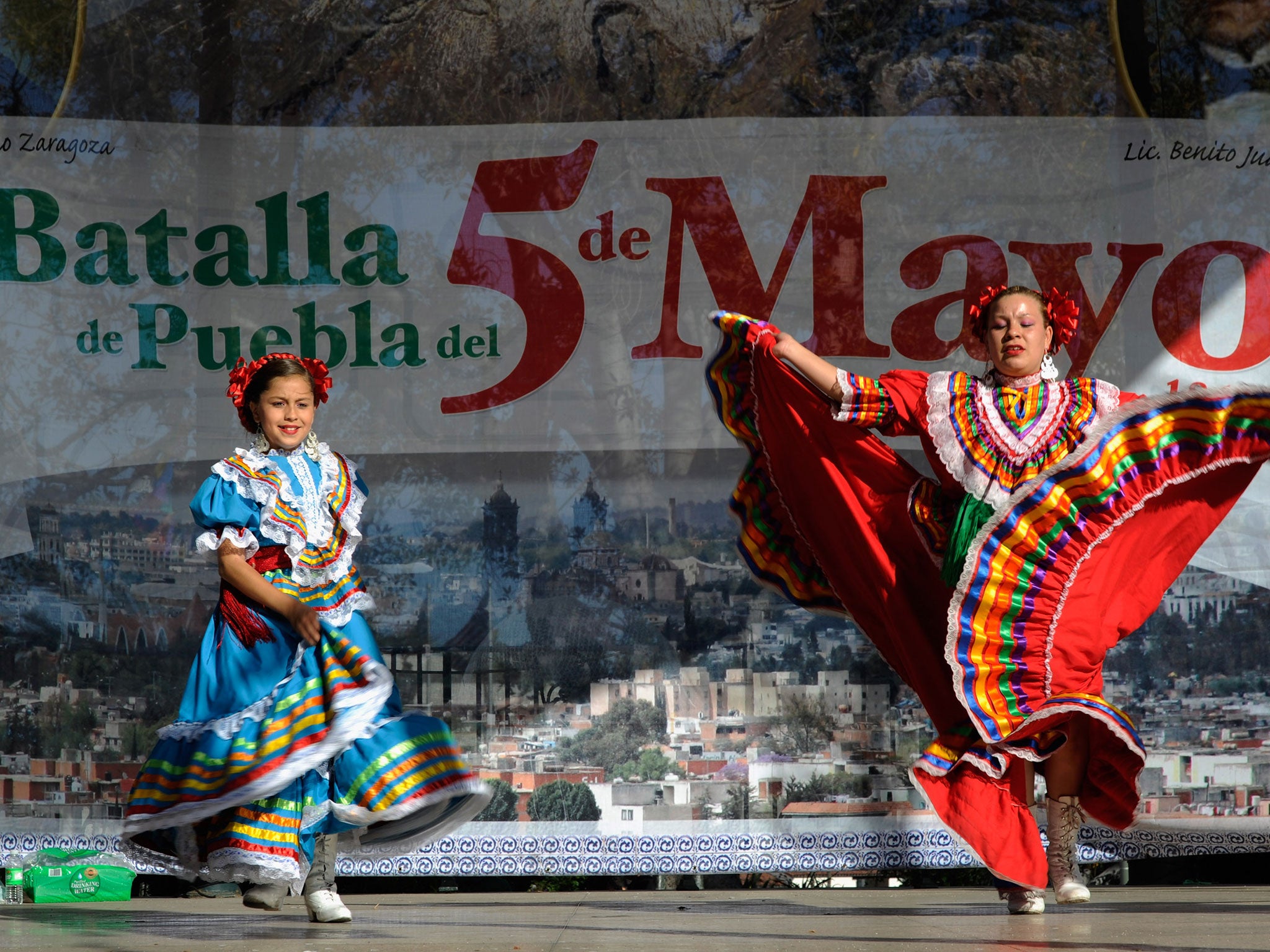Cinco de Mayo: What is it? How is it celebrated?
The holiday is big in the US, and has been heavily commercialised. But how did it get to this point?

Your support helps us to tell the story
From reproductive rights to climate change to Big Tech, The Independent is on the ground when the story is developing. Whether it's investigating the financials of Elon Musk's pro-Trump PAC or producing our latest documentary, 'The A Word', which shines a light on the American women fighting for reproductive rights, we know how important it is to parse out the facts from the messaging.
At such a critical moment in US history, we need reporters on the ground. Your donation allows us to keep sending journalists to speak to both sides of the story.
The Independent is trusted by Americans across the entire political spectrum. And unlike many other quality news outlets, we choose not to lock Americans out of our reporting and analysis with paywalls. We believe quality journalism should be available to everyone, paid for by those who can afford it.
Your support makes all the difference.Cinco de Mayo – the Spanish translation of May 5th - is not the celebration of Mexican independence as many people believe. In fact, Cinco de Mayo is an annual celebration of the unexpected victory of the Battle of Puebla by the Mexican Republic.
The battle took place on 5 May 1862, between a powerful French army (who were chasing unpaid debts) allied to conservative Mexican nobles and a liberal, republican Mexican force.
The 6,000-strong French forces outnumbered the poorly equipped Mexican army of just 2,000 troops. Despite this, the native forces won a decisive victory, killing more than 400 French troops.
Despite the republicans losing the rest of the conflict, with the French eventually withdrawing from Mexico, the Battle of Puebla came to represent courage and bravery against the odds and became a source of pride.
The Cinco de Mayo victory is primarily marked regionally in Mexico and is mainly only commemorated in Puebla state. However, the occasion is a well-known holiday in the US, celebrating American-Mexican relations.
However, this has led to confusion for some Mexican immigrants north of the border.
“The first time I heard about Cinco de Mayo was in elementary school [in the US], when the teachers began talking about this holiday and teaching more about Hispanic culture. We [Mexican students] didn’t even know what they were talking about,” José Alamillo, professor of Chicano studies at California State University, told Atlanta news outlet AJC.
However, the commercialisation of the holiday in the US has led to a rather unfortunate nickname. “Before, it was a small celebration, and it was not focused on selling beer,” said Mr Alamillo. “Now, instead of Cinco de Mayo, they call it Drinko de Mayo.”
Cinco de Mayo is celebrated by Mexican-America citizens in the US with festivals, street parties, food, music and folk dancing.
However, the American commercial instinct is not the only for its popularity in the US.
General Ignacio Zaragosa, who led the Mexican forces to victory, was born in Texas when it was still Mexican territory. He is therefore considered by some to be the first Mexican-American hero.
Join our commenting forum
Join thought-provoking conversations, follow other Independent readers and see their replies
Comments